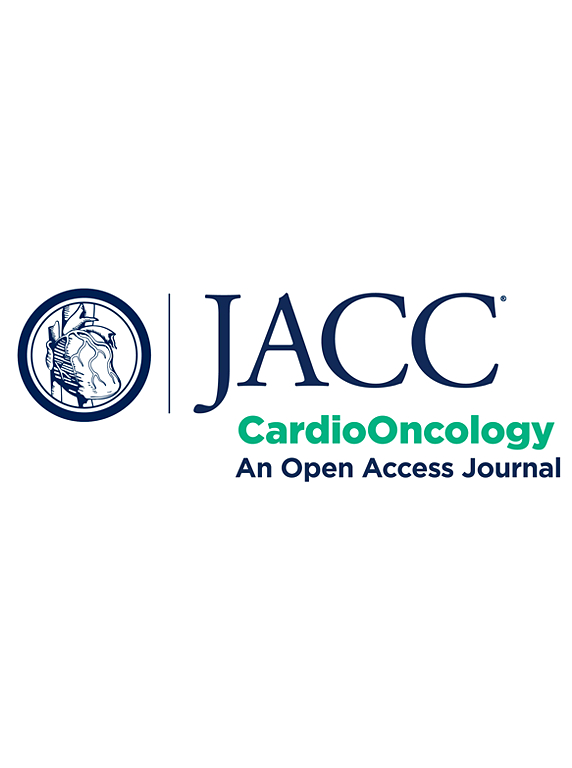有氧运动对长期乳腺癌幸存者心肺健康和心血管危险因素的影响
IF 12.8
1区 医学
Q1 CARDIAC & CARDIOVASCULAR SYSTEMS
引用次数: 0
摘要
癌症治疗可能会损害运动治疗的生理适应性,但没有研究直接比较癌症幸存者和癌症初发对照组之间的运动效果。目的:本研究旨在探讨有氧运动对蒽环类药物治疗的乳腺癌长期幸存者(BCS)的影响,并比较其对癌症早期妇女的影响。方法CAUSE(心血管幸存者运动)试验是一项两组随机对照试验,其中长期BCS被分配为每周三次的非线性有氧运动,持续5个月(BCS运动)或常规护理(BCS常规护理)。第三组同样年龄的未患癌症的妇女完成了同样的运动干预。主要终点为心肺适能(CRF)(以Vo2peak测量)。次要结局包括心血管危险因素(心脏代谢生物标志物和身体组成)和患者报告的结局(主观活力和生活满意度)。结果2020年10月~ 2023年2月,BCS 140例(年龄59.0±6.4岁;治疗后11±1年)和69名癌症初发妇女(年龄57.8±4.9岁)入组。从基线到运动干预后,BCS运动组的Vo2peak增加了1.2±2.6 mL·kg−1·min−1,BCS常规护理组的Vo2peak增加了0.01±2.5 mL·kg−1·min−1(平均差1.3;95%置信区间[CI]: 0.5-2.1;P = 0.002),非癌症受试者减少2.6±2.5 mL·kg - 1·min - 1 (BCS运动与非癌症受试者:平均差异为- 1.4;95% CI:−2.2 ~−0.5;P = 0.003)。未观察到心血管危险因素的变化。与BCS常规护理相比,BCS运动组主观活力有所改善(平均差2.56;95% ci: 1.22-3.90;P & lt;0.001)和生活满意度(平均差1.68;95% ci: 0.43-2.93;P = 0.009)。结论:尽管有氧运动可以改善蒽环类药物治疗的长期BCS患者的CRF,但其反应不到癌症初发患者的一半。本文章由计算机程序翻译,如有差异,请以英文原文为准。
Effects of Aerobic Exercise on Cardiorespiratory Fitness and Cardiovascular Risk Factors in Long-Term Breast Cancer Survivors
Background
Cancer treatment may impair physiological adaptations to exercise therapy, yet no study has directly compared exercise effects between cancer survivors and cancer-naive control subjects.
Objectives
This study sought to examine the effects of aerobic exercise in anthracycline-treated long-term survivors of breast cancer (BCS) and to compare the effects to cancer-naive women.
Methods
The CAUSE (CArdiovascUlar Survivors Exercise) trial was a 2-arm randomized controlled trial in which long-term BCS were assigned to thrice-weekly nonlinear aerobic exercise for 5 months (BCS exercise) or usual care (BCS usual care). A third group of similarly aged cancer-naive women completed the same exercise intervention. The primary outcome was cardiorespiratory fitness (CRF) (measured as o2peak). Secondary outcomes included cardiovascular risk factors (cardiometabolic biomarkers and body composition) and patient-reported outcomes (subjective vitality and life satisfaction).
Results
Between October 2020 and February 2023, 140 BCS (aged 59.0 ± 6.4 years; 11 ± 1 years after treatment) and 69 cancer-naive women (aged 57.8 ± 4.9 years) were enrolled. From baseline to post-exercise intervention, Vo2peak increased by 1.2 ± 2.6 mL·kg−1·min−1 in the BCS exercise, by 0.01 ± 2.5 mL·kg−1·min−1 in the BCS usual care group (mean difference 1.3; 95% confidence interval [CI]: 0.5-2.1; P = 0.002), and by 2.6 ± 2.5 mL·kg−1·min−1 in non-cancer subjects (BCS exercise vs non-cancer subjects: mean difference −1.4; 95% CI: −2.2 to −0.5; P = 0.003). No changes in cardiovascular risk factors were observed. Compared with BCS usual care, the BCS exercise group reported improved subjective vitality (mean difference 2.56; 95% CI: 1.22-3.90; P < 0.001) and satisfaction with life (mean difference 1.68; 95% CI: 0.43-2.93; P = 0.009).
Conclusions
Although aerobic exercise improves CRF in anthracycline-treated long-term BCS, the response was less than one-half that observed in cancer-naive subjects.
求助全文
通过发布文献求助,成功后即可免费获取论文全文。
去求助
来源期刊

Jacc: Cardiooncology
Multiple-
CiteScore
12.50
自引率
6.30%
发文量
106
期刊介绍:
JACC: CardioOncology is a specialized journal that belongs to the esteemed Journal of the American College of Cardiology (JACC) family. Its purpose is to enhance cardiovascular care for cancer patients by publishing high-quality, innovative scientific research and sharing evidence-based knowledge.
The journal aims to revolutionize the field of cardio-oncology and actively involve and educate professionals in both cardiovascular and oncology fields. It covers a wide range of topics including pre-clinical, translational, and clinical research, as well as best practices in cardio-oncology. Key areas of focus include understanding disease mechanisms, utilizing in vitro and in vivo models, exploring novel and traditional therapeutics (across Phase I-IV trials), studying epidemiology, employing precision medicine, and investigating primary and secondary prevention.
Amyloidosis, cardiovascular risk factors, heart failure, and vascular disease are some examples of the disease states that are of particular interest to the journal. However, it welcomes research on other relevant conditions as well.
 求助内容:
求助内容: 应助结果提醒方式:
应助结果提醒方式:


